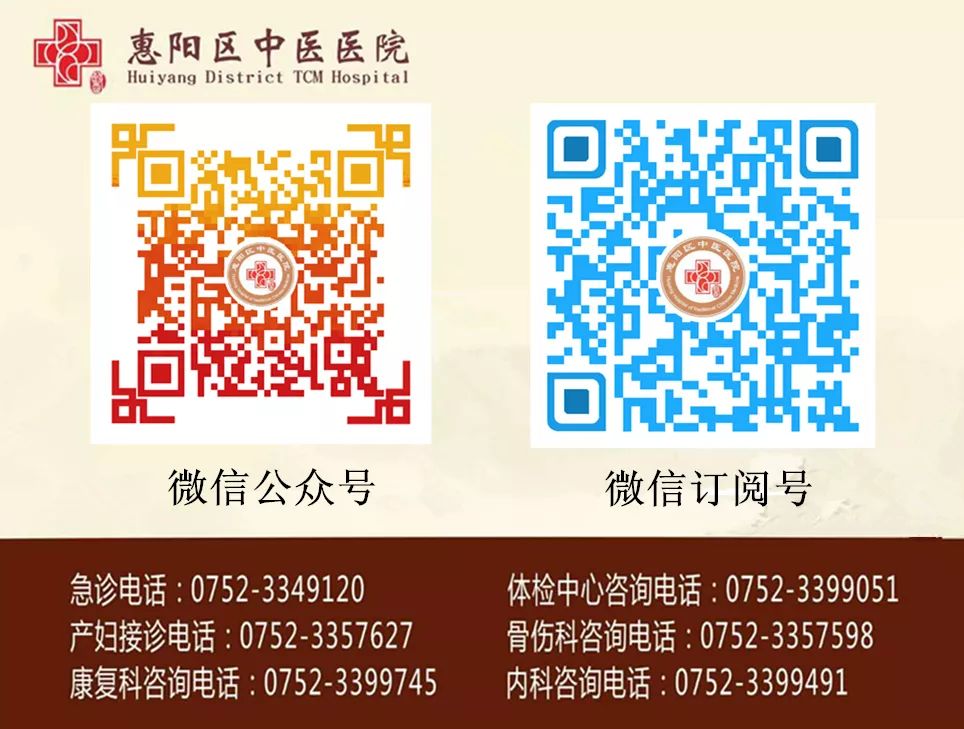

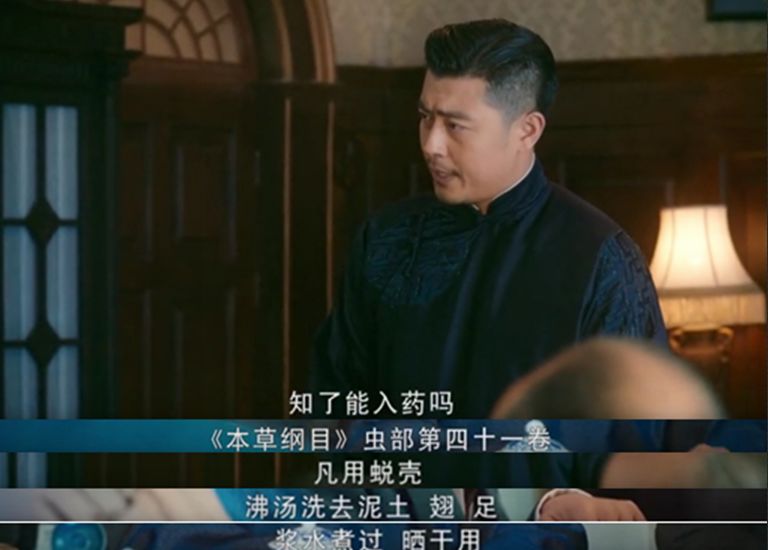
Image: A scene from the TV series ‘The Old Chinese Doctor’
Many of you may have this question: Can cicadas be used as medicine? What are their effects? Today, let me explain.
Cicada
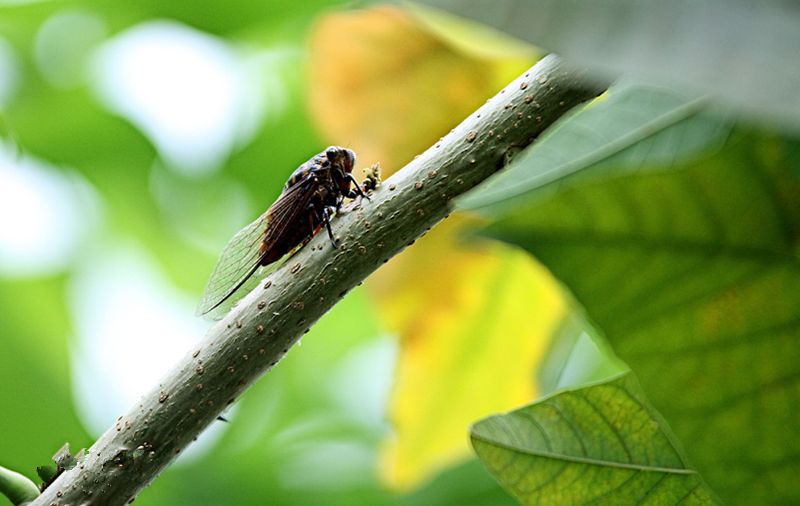
Image: Cicadas resting on a tree
Herb Name: Cicada, also known as Zha, Ming Tiao, Ma Tiao, and others, is the entire body of the cicada species, particularly the black cicada. It is captured between June and July, resting on trees such as poplar, willow, elm, and locust. After capture, it is steamed to death and dried.
This species has a long and wide male body, measuring 4.4 to 4.8 cm in length and a wingspan of 12.5 cm, while the female is slightly shorter; it is black and shiny, with a broad head that is concave in the center, the top and side edges are light yellow-brown, with a pair of large, horizontally wide compound eyes that are light yellow-brown; there are three simple eyes located in the center of the compound eyes, arranged in a triangular shape. The antennae are short and located in front of the compound eyes.
Properties and Meridians of Traditional Chinese Medicine: Salty, sweet, cold in nature, entering the liver and lung meridians.
Main Indications: Clears heat, extinguishes wind, calms the spirit. It is primarily used for fever in children; convulsions; epilepsy; night crying; and migraines.
Dosage: For internal use, decoct 1-3 cicadas each time, or use in pills or powders.
Cicada Slough
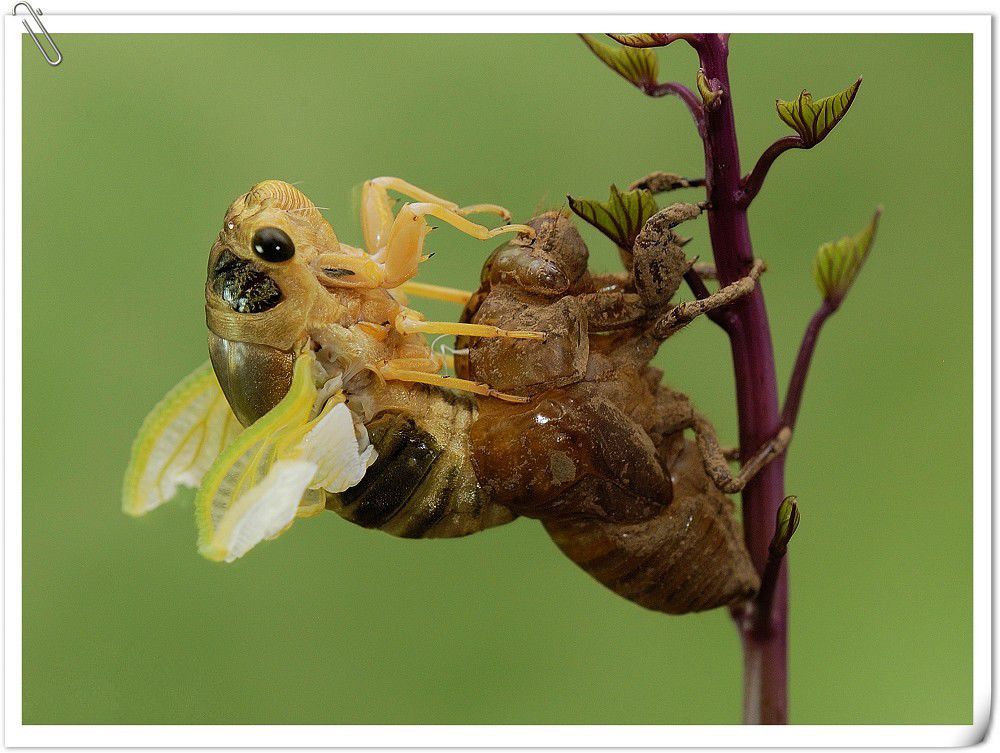
Herb Name: Also known as cicada skin, cicada shell, and others, it is the exoskeleton shed by the black cicada after metamorphosis.
The cicada slough resembles a cicada but is hollow, slightly curved, measuring about 3-4 cm in length and 2 cm in width, with a yellow-brown surface, semi-transparent, and shiny. The head has a pair of thread-like antennae, which are often broken off, and the compound eyes are prominent. The neck is slightly protruding, with a developed mouthpart, the upper lip is wide and short, while the lower lip extends into a tubular shape. The back of the thorax has cross-shaped splits, curling inward, with two pairs of small wings on either side; the underside has three pairs of legs covered in yellow-brown fine hairs, the abdomen is blunt and rounded, consisting of 9 segments, light, hollow, fragile, odorless, and has a bland taste.
Properties and Meridians of Traditional Chinese Medicine: Sweet, salty, cool in nature, entering the lung and liver meridians.
Effects: Disperses wind-heat, benefits the throat, promotes rashes, brightens the eyes, and stops spasms.
Dosage: For decoction, 3-6 g, or use in pills or powders, externally apply an appropriate amount.
Cicada Flower
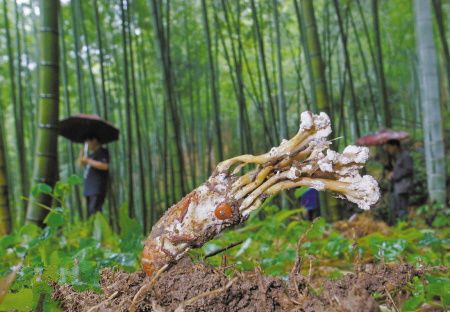
Cicada Flower is a complex formed by the parasitism of the fungus Cordyceps cicadae on cicada larvae, similar to Cordyceps sinensis, consisting of the dried insect body. The insect body is oval, slightly curved, about 3 cm long and 1-1.4 cm in diameter, resembling cicada slough, with several gray-black or gray-white stalks on the head, which are long or curled, or branched, measuring 2-5 cm long, brittle and easy to break. The insect body is brown-yellow, mostly covered with gray-white mycelium, and when broken, it reveals a soft, powdery white or whitish substance inside, with larger, intact, fleshy white specimens being the best.
Properties and Meridians of Traditional Chinese Medicine: Sweet, cold, non-toxic, entering the lung and liver meridians.
Effects: Disperses wind-heat; promotes rashes; stops spasms; brightens the eyes and reduces opacity.
Main Indications: External wind-heat; fever; dizziness; sore throat; early stage of rashes; rashes that are not smoothly expressed; childhood convulsions; red and swollen eyes; opacity covering the eyes; night crying.
Dosage: For internal use, decoct 3-9 g.
References:
Chinese Materia Medica (Volume 1) (Compiled by the National Administration of Traditional Chinese Medicine, 1999)
Chinese Materia Medica (Volume 9) (Compiled by the National Administration of Traditional Chinese Medicine, 1999)
Dictionary of Traditional Chinese Medicine (Compiled by Nanjing University of Traditional Chinese Medicine, 2006)
Submitted by: Zhang Rixin
Series Review:
Series One of Traditional Chinese Medicine Knowledge in ‘The Old Chinese Doctor’ – The Reason for ‘Long Stewing Aconite’
Series Two of Traditional Chinese Medicine Culture in ‘The Old Chinese Doctor’ – ‘Song of Decoction’ and ‘Four Gentlemen Decoction’
Series Three of Traditional Chinese Medicine Culture in ‘The Old Chinese Doctor’ – Wu Xuechu’s Ancestral Skill – Bloodletting Therapy
Series Four of Traditional Chinese Medicine Culture in ‘The Old Chinese Doctor’ – The Four Diagnostic Methods
Series Five of Traditional Chinese Medicine Culture in ‘The Old Chinese Doctor’ – ‘Mercury Poisoning’
Series Six of Traditional Chinese Medicine Culture in ‘The Old Chinese Doctor’ – The Precious and Mysterious Ambergris
Series Seven of Traditional Chinese Medicine Culture in ‘The Old Chinese Doctor’ – ‘Monarch, Minister, Assistant, and Messenger’ in Formulas
Series Eight of Traditional Chinese Medicine Culture in ‘The Old Chinese Doctor’ – Practicing Medicine in the Clinic
Series Nine of Traditional Chinese Medicine Culture in ‘The Old Chinese Doctor’ – Is ‘Suspended Pulse Diagnosis’ Really So ‘Suspended’?
